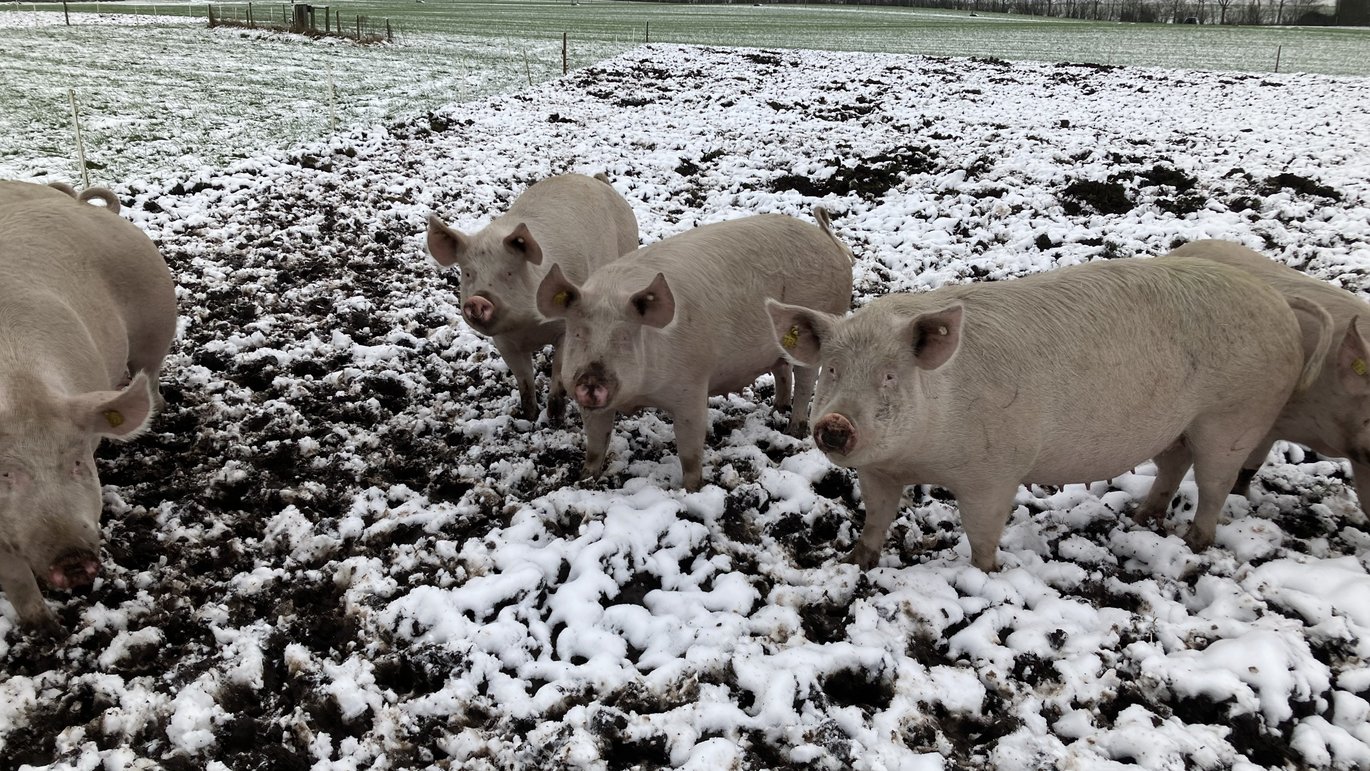Protein level in feed for gestating sows can be reduced
Research shows that lower protein content in feed for gestating sows can lead to heavier piglets

As a result of the corona crisis, the agri-food industry is facing a shortage of organic soybean meal and other protein sources. The global supply situation therefore makes it even more relevant to examine, if it is possible to cut down protein in the feed for pigs.
Researchers from Aarhus University, Department of Animal Science, have in the Organic RDD6 project, WI-FI, found that it can have a positive effect to reduce the protein level in compound feed of feed for sows early and in the middle of their gestation period. At the same time, the protein that the sows receive via roughage during the winter should be included. Results show that a reduction in the protein level gives more energy to the milk yield of the sows, which entails that the piglets grow better in the following lactation period.
Significantly higher litter weight at weaning
The WI-FI project has examined a total of 20 pregnant and lactating TN70 sows through the winter of 2020-2021. Half of the sows were given a control compound feed, and the other half received compound feed with a 17 percent lower crude protein content. The nutritional standard for indoor pregnant sows is 90 g digestible protein per feed unit. In the experiment, the control compound feed contained 76 g of digestible protein and the experimental feed contained 63 g of digestible protein per feed unit. The energy content of the two diets was the same, and during the lactation period, all sows were fed with the same lactation compound feed. The sows also had free access to silage.
The piglets from the sows that were fed with the low protein diet were significantly heavier at weaning, compared to piglets from sows fed with the higher protein content (an average litter weight of 276 kg compared to 238 kg in the control group).
By protein oversupply, the sows use energy to break down the excess protein and excrete it via the urine. The higher litter weight at weaning in the protein-reduced group is probably due to the fact that the sows here spent less energy on breaking down excess protein, and they thus had more energy to produce milk. The "low-protein sows" had a lower body weight and less muscle mass due to the reduced protein intake. As a result, they also had a reduced need for energy for maintenance. In addition, the experiment showed that the "low-protein group" secreted 23 percent less nitrogen in the urine on day 60 of pregnancy.
Birth weight and number of live-born are not negatively affected
The sows had an average of 17.2 liveborn with an average birth weight of 1670 g, and at the time of weaning they had an average of 13.3 piglets per. litter. The backfat thickness, number of live-born piglets or birth weight were not negatively affected by the fact that the gestational diet contained less protein.
The researchers assume that the sows' actual daily need for crude protein early and in the middle of the gestation period is even lower than the level currently investigated in the WI-FI project.